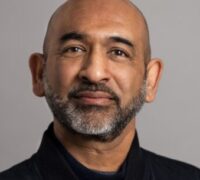At present, while there are only around 6,000 B Corp certified companies, there are more than 200,000 that have used the open-source B Impact Assessment tool to measure their company’s effectiveness on the environmental, social, and governance front. (Full disclosure, I am an Affiliate B Leader.)
Next, we will move into how decision-makers can translate the new concept of corporate purpose and the idea of “doing things right” into a business context by embedding transformation in their organizations and building alliances with all stakeholders.
Priming your organization for holistic transformation
The journey to a sustainable future – environmental, social, and governance – belongs at the highest level of the company as well as at the deepest operational level. If it doesn’t pervade throughout the organization, it will be short-lived or, at best, dependent on the one person driving it. Encouraging organizational readiness is, therefore, essential for sustainability to reside and thrive in the DNA of the operational entity so that it becomes a true way of doing business. The sustainability team should exist to help collaborate with and guide teams and decision-makers, but the targets and the intent must belong to the divisions that want to shine throughout the company for their sustainable methods and stakeholder engagement.
This is not a simple process and involves the various divisions co-creating an agenda with the sustainability team. It involves answering tough questions about the various aspects of sourcing, production, operations, and supply chain to create a joint list of actions that need to be taken over a defined timeline and that can be seen in the context of the entire company. Triaging the various recommendations is a delicate exercise involving leadership, division heads, and sustainability experts and requires a corporate culture that sparks courageous actions.
This starts at the top: a core aspect of successful sustainable business transformation is for the board and leadership to actively enable and encourage courageous decisions. This involves looking at critical decisions through a multi-lens of ESG and not just the financials. This is easier said than done, but if not facilitated at the top, it will almost always fall by the wayside, leaving the financial lens to dominate decision-making processes.
Looking beyond your company to systemic change
A stark reality that companies and their key executives must recognize is that, no matter how good their company becomes in the sustainability space, systemic change in any industry can only come about if multiple key players move in a common direction with aligned standards to “tip” the sector into systemic sustainability. Environmental, social, and governance impact at scale can only truly be felt when industry players gather around a table and discuss pre-competitive issues with a view to creating systemic change.
This could involve human rights issues for supply-chain-heavy organizations, sourcing issues for production companies, and carbon measurement issues for carbon-intensive industries. Unless industries tip in this way and systemic changes are created, sustainability efforts – while noteworthy for a single company – can be reduced to an internal achievement or worse, just bragging rights.
Hence, for systemic change, there is a crucial need to look at the broader concept of impact in the sustainability space: of recognizing the absolute and critical need for engaging stakeholders and bringing the various actors, competitors, and value-chain members to the table to thrash out the issues and agree on alignments in terms of sustainability standards, measurements, third-party verifications, and the resultant communications that benefit the industry as a whole, as much as it will help an individual player.
Regardless of the resistance to and politicization of ESG in some quarters, a steadily increasing number of companies are defining their purpose through the lens of their desired individual impact on the environment and on society. Industries, on the other hand, can define impact at scale and bring about systemic change. Business transformation needs both aspects – a company’s commitment internally and the sector’s commitment collectively and externally to make a difference and deliver the impact needed.


 Audio available
Audio available




